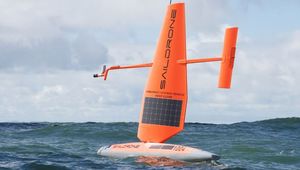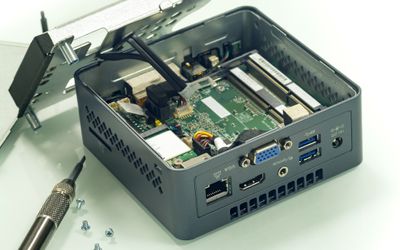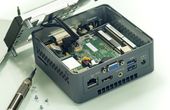Digilent B200 Ettus USRP Cognitive Radio
Fully integrated USRP platform for low-cost development and radio experimentation.
Technical Specifications
| FPGA Board | Xilinx Spartan-6 XC6SLX75 FPGA |
| Frequency Range | 70 MHz to 6 |
| Instantaneous Bandwidth | < 56 |
| Connectivity Interface | USB 3.0 |
| ADC and DAC Resolution | 12 |
| Max ADC and DAC Sample Rate | 61.44MS/s |
| Dimensions | 97 mm x 155 mm x 15 mm |
| Operating Temperature Range | 0 to 45 |
| Compliance | 8471809000 HTC and 3A992.a ECCN |
Overview
Digilent B200 Ettus USRP SDR/Cognitive Radio is a single-board platform that features a development kit for the prototyping and development of GNU radio systems. The board contains an integrated RF frontend, providing continuous frequency coverage from 70MHz to 6GHz. The bus-powered USB 3.0 connectivity allows it to connect to external devices and is fully reprogrammable to work with industry-ready USRP platforms. It’s a single-channel transceiver that can be used for a wide range of FM communication applications.
Integrated RF Frontend Architecture for Reduced Software/Hardware Complexity
The Digilent B200 Ettus USRP/ Cognitive Radio features a single pair of a transmitter (Tx) and a Receiver (Rx) that supports half or full-duplex communication. Its integrated RF frontend Analog Device AD9364 direct transceiver is a single-chip device that works in conjunction with a digital baseband processor to stream at a bandwidth up to 56MHz in real-time. The board can handle a signal chain from AD9364 via a bus that reduces hardware design complexity and software programmability. It features a benchmarked sample rate of 61.44MS/s quadrature throughput for real-time systems enabling smooth bandwidth usage for Software Defined Radio (SDR) environments such as the GNU radio.
The board is USB powered, featuring an open and reconfigurable Spartan6 XC6SLX75 FPGA board that connects to a host computer via USB 3.0. Moreover, there are free Xilinx tools to facilitate advanced applications. With a 12-bit ADC resolution, a 78dBc ADC Wideband Spurious-Free Dynamic Range (SFDR) provides a more comprehensive dynamic range. Moreover, the ADC features a ±75 ppb w/GPS Unlocked TCXO reference and less than one ppb w/GPS Locked TCXO reference. The system ADC ensures a two ppm frequency accuracy, making it suitable for high-accuracy operations in development and radio testing systems. The board also contains a 12-bit Digital Analog Converter (DAC) with a sample rate of 61.44 MS/s.
Designed for Low-Cost Experimentation and GNU Radio Development
The low-cost design is ideal for testing experimentation with various communication tools. Thanks to the USRP hardware Driver, testers can conveniently reuse different codes to enhance the functionality of the existing designs. The B200 Ettus supports USRP hardware driver 3.9.2 or later, which uses a general-purpose processor (GPP) to run a user-space library to control and communicate with all devices from the USRP family. It enables the transmission and reception of signals from host computers.
The board seamlessly connects with Python APIs, GNURadio, and C++ development environments, making it a convenient option for developers to add to their existing design and prototyping systems. The setup process is minimal, requiring just a USB cable connection to power up the system. There are adequate mounting holes for convenient and speedy setup on workbenches.
B200 Ettus applications include an extensive range of RF communication modules, cellular communication, ISM, GPS, WiFi, and TV broadcast applications. It’s ready to use platform allowing the testers to test GNU radio prototyping applications. The board is compatible with open-source applications like HDSDR and OpenBTS, allowing testers to operate different industry-ready systems for testing and design applications.
Where to find it

Mouser Electronics
Mouser Electronics is a worldwide leading authorized distributor of semiconductors and electronic components.








